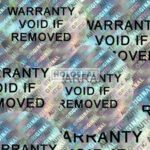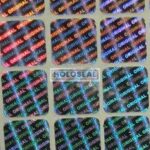A pharmaceutical product that falls short of its promises is considered to be a phoney drug. Any pharmaceutical created or developed to make it appear better than it is is referred to as this. Additionally, the word can be used to describe a drug that has fictitious packaging or is purposely and fraudulently mislabeled as to its identity and/or origins.
It is well recognised that taking fake pharmaceuticals can be lethal, putting our own health and wellbeing in peril as well as the reputation of international public health systems. The issue of fake medications has persisted despite all regulatory authorities’ efforts to maintain standard compliance.
You as a consumer might not have access to the majority of the test instruments used by regulatory organisations to verify the legitimacy of a drug product. The following guidance will act as a buyer’s guide for genuine pharmaceutical goods:
1) Visual Assessment
According to the World Health Organisation (WHO) (1999), visual inspection is still the first step in identifying potentially phoney pharmaceuticals, regardless of the analytical methods used. This is because such observations can be utilised to identify fake goods even when information on the physical characteristics of a legitimate therapeutic product is lacking. Before you buy or use the item, you must carefully inspect the package and its contents.
Look over the package’s contents to see if there is anything that doesn’t appear right or out of the ordinary.
You can tell if the security seal has been tampered with by looking for cracks or rips in the sealing tape and seals.
Check the content for spelling errors and unusual typefaces, font sizes, and print colours.
Make sure you can read the information on the primary and secondary packages.
Check that the manufacturer’s address, batch number, and expiration date on the secondary package match those on the first one.
Check to see if the manufacturer’s address can be tracked, or if it contains the exact location of the business rather than just the national address.
Examine the drug’s external characteristics (colour uniformity, size, shape, consistency, etc.) for deviations. The following physical tablet faults are regularly found, according to the WHO, and should be avoided:
Extra powder and/or fragments of tablets (from abraded, crushed, or broken tablets) at the bottom of the container.
Tablets that have cracks or chips, swelling, mottling, discolouration, or fusion; the appearance of crystal on the container’s walls or on the tablet.
Keep an eye out for any changes in the capsule’s shell, such as hardness or softening, cracking, swelling, mottling, or discoloration.
2) Mobile Authentication Using the Short Message Service
The Mobile Authentication Service (MAS) is one of the most innovative tools being used to address the issue of counterfeit drugs. This technology has enabled many cell phone users to identify fake pharmaceuticals.
3) Look up the address of the manufacturer
It is only obvious and simple to verify the maker’s place of birth when it comes from a credible, international organisation with a well-established structure. Since bogus businesses are unable to have their particular location imprinted on the drugs, this is generally not the case. Think at whether you can identify the producer’s location, such as whether it includes the company’s exact location rather than just the name of the nation.
4) Price
Double check the item if the price of the prescription is unexpectedly much less expensive than the usual cost because there’s a risk that the fraudulent businesses were trying to entice customers by giving drugs at a much lower cost.
5) Unintended Outcome
The correct Active Pharmaceutical Ingredient (API) is sometimes absent from counterfeit pharmaceuticals. Additionally, they can contain harmful medications that don’t work as prescribed, the improper components, or the wrong dosage. Unusual side effects, allergic reactions, or a worsening of a medical condition after taking a drug are all warning signs of a fake. The use of the medicine should be terminated right once if any of the aforementioned things happen.
Conclusion :-
The harm caused by the multitudes of phoney, dubious, and inferior medications that are available on the market today knows no bounds. Drugs are poison, and the appropriate dosage distinguishes between a poison and a cure. Therefore, it’s crucial to refrain from using copies. You may avoid purchasing, using, and suffering the unpleasant effects of fake medication products by following the recommendations in this page, and you’ll also be able to save some money. You can contribute to the fight against bogus medicines by sharing this information.
Pharma products can be protected against duplicate using hologram stickers, holographic strips, and holographic films.




